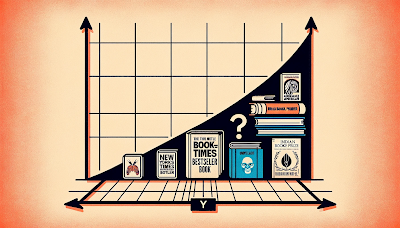Identifying the right set of features for a new product or service
In this chapter, an algorithm is given to identify the blue ocean. This is a divergence from disruptive innovation approach which does not tell you how you can identify an opportunity.
The approach uses a few simple tools. First is to map out what they authors call a strategy canvas - basically a bunch of factors that a product or service competes on and where a particular brand stands there - high, medium or low. Let me illustrate this by taking an example of fiction novels in Indian market. If I were to list some of the factors, books compete on, they would be complexity of plot, complexity of setting, elegance of language, uniqueness of characters, novelty of theme, audience context and of course price. Two major best selling genres in India market were foreign commercial fiction and Literary fiction. Foreign commercial fiction would have high complexity of plot, high complexity of setting, medium language quality, medium uniqueness of characters, high novelty of theme, low audience context and high price. Indian Literary fiction on the other hand would medium complexity of plot, medium complexity of setting, high language quality, high uniqueness of characters, medium novelty of theme, medium audience context and high price.
Let us now proceed with the framework. Next step the authors say is to eliminate some of the factors, reduce some of the factors, increase some of the factors and introduce new factors. Most in India know about Chetan Bhagat who entered the Indian literary scene with the easy to read campus romances creating a blue ocean capturing the Indian movie going audience. Let us see how this framework can be applied to explain what he did. Complexity of plot - reduce. Complexity of setting - eliminate - make it standard Indian campuses. Language quality - eliminate. Just write in day to day language spoken in India. Uniqueness of characters - eliminate. Just write about day to day characters you meet daily. Novelty of theme - reduce. Price - reduce. Thus we have seen the eliminate and reduce. In terms of increase, he has increased the audience context by making it about Indian college life that every Indian is familiar with. The new factors he introduced are the aspirational appeal for the young Indian middle class which India's movie Industry had been catering to, bringing to life their fantasies. He did the same by latching on to India's IIT and IIM around which many of young Indians' dreams pivoted from where he himself was a graduate making it his own unique selling point as well.
But we are not done with framework yet. We need to check this profile for three characteristics - focus, divergence and unique tag line. Clearly he has focus - he just focuses on aspirational theme and relatability, not wasting resources on language, setting, plot, complex characterization and other such aspects. This is a clear divergence from the curves of foreign commercial fiction or India literary fiction. And if I were to put a tag line, first thing that comes to mind is every "Bollywood in Print".
Some of the other aspects are to ensure you don't have contradictory strategy for factors. Like if Chetan Bhagat compromised on relatability while going for aspirational, it might not have worked. And then the book emphasizes about not over delivering on characteristics customers don't talk about. The research on settings would be a good example. Somebody criticized Chetan Bhagat on getting some very basic fact regarding the location where he had set his story in wrong. But that is precisely the point. Any research on the setting is wasted resource. And finally, authors say the language the industry uses for the parameters indicates how in tune it is with audience preferences. Indian literati talk of stuff such a literary merit which don't at all matter to mass Indian reader market.
I haven't done my analysis rigorously here and there would be gaps. But I hope I got the broad point across on how Chetan Bhagat may have possibly identified the blue ocean in the shrinking Indian reader market and not only opened up a vast market for himself but a generation of authors who followed in his wake.

Comments
Post a Comment